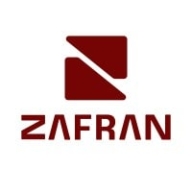


Tenable Nessus and XM Cyber are key players in cybersecurity, offering distinct features. Tenable Nessus leads with its user-friendly deployment and cost-effective vulnerability management, while XM Cyber shines in advanced threat simulations and comprehensive customer support.
Features: Tenable Nessus provides a comprehensive vulnerability assessment platform, efficient scanning and reporting capabilities, and it focuses on vulnerability management. XM Cyber offers advanced attack simulation, insights into potential attack paths, and prioritizes proactive threat simulations.
Room for Improvement: Tenable Nessus could enhance its threat simulation features, improve network visualization capabilities, and further integrate threat detection. XM Cyber could streamline its deployment process, expand support for diverse network environments, and offer more competitive pricing options.
Ease of Deployment and Customer Service: Tenable Nessus is recognized for easy deployment with minimal complexity and appealing accessibility for businesses seeking efficiency. It offers efficient service for a faster setup. XM Cyber, although complex in deployment, provides robust support that enhances user satisfaction with responsive customer service.
Pricing and ROI: Tenable Nessus is known for cost-effectiveness, showing clear ROI through its efficient vulnerability management. XM Cyber might require a higher initial investment but offers significant ROI by providing advanced capabilities in threat detection and prevention through sophisticated threat analysis.
| Product | Market Share (%) |
|---|---|
| Tenable Nessus | 5.9% |
| Zafran Security | 1.1% |
| XM Cyber | 1.1% |
| Other | 91.9% |


| Company Size | Count |
|---|---|
| Small Business | 39 |
| Midsize Enterprise | 19 |
| Large Enterprise | 35 |
Zafran Security integrates with existing security tools to identify and mitigate vulnerabilities effectively, proving that most critical vulnerabilities are not exploitable, optimizing threat management.
Zafran Security introduces an innovative operating model for managing security threats and vulnerabilities. By leveraging the threat exposure management platform, it pinpoints and prioritizes exploitable vulnerabilities, reducing risk through immediate remediation. This platform enhances your hybrid cloud security by normalizing vulnerability signals and integrating specific IT context data, such as CVE runtime presence and internet asset reachability, into its analysis. No longer reliant on patch windows, Zafran Security allows you to manage risks actively.
What are the key features of Zafran Security?
What benefits can users expect from Zafran Security?
In industries where security is paramount, such as finance and healthcare, Zafran Security provides invaluable protection by ensuring that only exploitable vulnerabilities are addressed. It allows entities to maintain robust security measures while allocating resources efficiently, fitting seamlessly into existing security strategies.
Tenable Nessus provides an efficient vulnerability management system with swift deployment and comprehensive scanning capabilities, making it an ideal choice for organizations seeking to enhance their security posture through effective threat detection and mitigation strategies.
Renowned for its top-tier vulnerability detection, Tenable Nessus offers a robust platform that integrates effortlessly across systems, enhancing threat management through automation, real-time monitoring, and customizable scanning options. Its broad asset coverage, including network devices and applications, coupled with ease of deployment, positions it as a go-to option for risk assessment and compliance. Organizations value its extensive reporting features and database, although they suggest enhancements in reporting formats and false positive detection. A more intuitive interface, improved cloud support, and competitive pricing models are sought after to cater to evolving enterprise needs.
What are the key features of Tenable Nessus?In industries such as finance, healthcare, and tech, Tenable Nessus is implemented for scanning internal and external networks, identifying risks, and ensuring data protection compliance. Organizations conduct regular scans to detect security vulnerabilities in servers and databases, leveraging its capabilities to strengthen their security frameworks while managing cloud infrastructures and enterprise networks efficiently.
XM Cyber is a leading hybrid cloud security company that’s changing the way innovative organizations approach cyber risk. Our attack path management platform continuously uncovers hidden attack paths to your critical assets across cloud and on-prem environments, so you can cut them off at key junctures and eradicate risk with a fraction of the effort. This overcomes the big disconnect that security teams experience when they’re presented with endless alerts, yet can’t see which exposures impact risk the most, how they come together to be exploited by an attacker, or how to efficiently eliminate them. This approach is a complete game-changer, which is why some of the world’s largest, most complex organizations choose XM Cyber to help eradicate risk. Founded by top executives from the Israeli cyber intelligence community, XM Cyber has offices in North America, Europe, and Israel.
We monitor all Vulnerability Management reviews to prevent fraudulent reviews and keep review quality high. We do not post reviews by company employees or direct competitors. We validate each review for authenticity via cross-reference with LinkedIn, and personal follow-up with the reviewer when necessary.